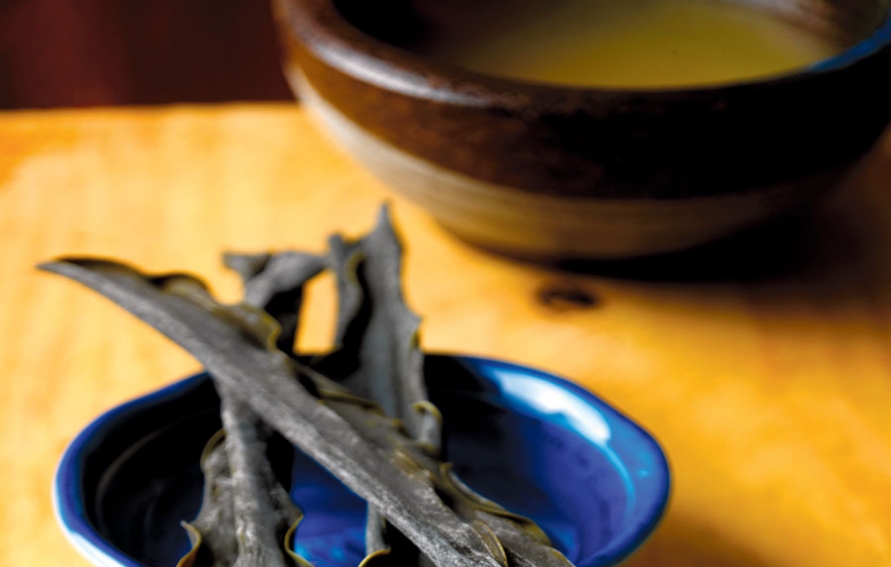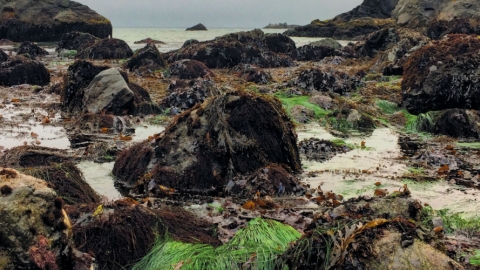Ingredients
- 1 gallon filtered water
- 2 ounces dried kombu
- 1–2 tablespoons of mirin (a Japanese sweet rice wine)
- 1–2 tablespoons of soy sauce (90% soy, 10% wheat)
- 1 bundle of soba noodles per person
- 1 Daikon radish
- 1 bunch Tokyo Negi onion, green parts chopped into wisps. (This perennial allium, native to Siberia and Northwestern China, is grown widely in Japan. If it is not available in your local Asian market, chopped scallion is a fine substitute.)
- Spice, to test either lchimi (ground red chilli pepper); or shichi-mi tōgarashi (a premixed blend of red chili pepper, Sansho Japanese pepper, roasted orange peel, black sesame seed, white sesame seed, hemp seed, ground ginger,
- ground nori seaweed and poppy seed); or Sancho Japanese green peppercorn leaf powder
Preparation
Bring the filtered water to boil, then turn off the heat. Add the dried kombu, allowing it to steep for 20 minutes. Take care not to boil the seaweed, as it is fragile and will fall apart, losing valuable nutrients.
Strain the broth through a fine-mesh sieve, setting aside the seaweed. Taste the broth. The pale blush of green is bright and vibrant, with a gentle nod to a mermaid.
Add 1–2 tablespoons each of mirin (for sweetness) and soy sauce (for depth). Taste and adjust seasoning accordingly. Cool the broth.
Bring a pot of tap water to boil and cook soba noodles 4–5 minutes. Immediately cool noodles in an ice bath.
Pluck the cooled soba noodles with 3 fingers, making a small nest and placing it in the center of each bowl. A secret known by Japanese chefs, these little nests create the perfect mouthful.
Fill the bowls with the cooled broth. (Note: The broth can be served warm with the noodles, but the noodles must always be cooled first or they will stick together.)
On a ginger grater, microplane or Saikai Japanese copper grater, shave the daikon radish over each soup bowl. Scatter finely chopped Tokyo Negi onion or scallion onto the soup and finish with a sprinkle of spice.
Slurp the soup, not just as a compliment to the chef but to aerate it to taste every bit of its umami and ocean nuance.
The kombu can be cut into small strips and eaten with the soup, or can be redried (and re-smoked) to be used again in a niban dashi, or second dashi. But the ichi dashi, or first dashi, is the ichi ban, or best.




